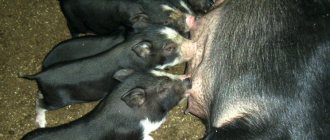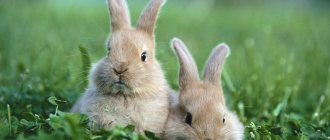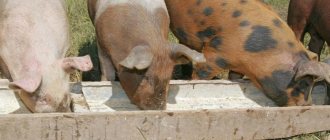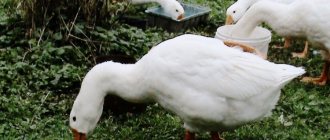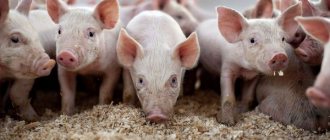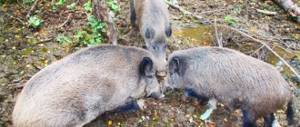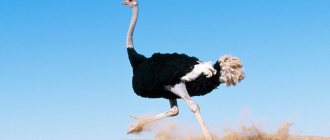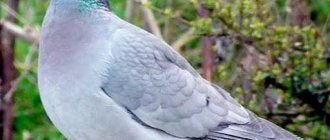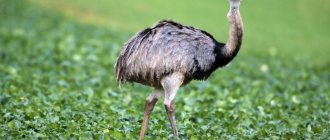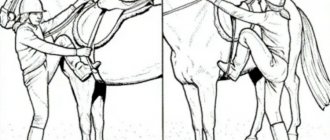Fat and meat types of pigs
Domesticated wild boars or sows live well not only in special livestock nurseries, but also in private areas. Thanks to the successful crossing of 2-3 types of piglets, farms can always count on the quality of the purchased pigs.
At the moment, there are 2 types of grunting animals: meat and greasy. Photos of domestic pigs can always be found on the Internet, which allows you to choose suitable individuals for your yard.
Meat, or another name - bacon, were bred to produce lean food, low in fat. The greasy pigs are heavily fattened to the required size, after which farmers receive a huge amount of lard. The most popular species in the Russian Federation are Duroc and Landrace.
But there are also meat-and-fat boars, which by their nature are universal. On the market, such piglets are much more expensive than the previous 2. Name of species: Latvian white, Murom.
Note!
- How to choose a mattress and not make a mistake? Review of the best models, size table
- Cotton blanket: advantages and disadvantages, rules of choice and care
- How to protect a gazebo from rain and wind in summer and snow in winter - a review of the best options
Piglet made of cardboard
To make the patch stronger and not deform, it is made of dense material. To do this, choose colored cardboard of the desired shade.
If you can’t find a tone, you can use paints. The little one will help you get the job done, armed with a brush.
Note!
- DIY scrapbooking for beginners: what it is and how to do it. What you need to create a beautiful album or notebook (photo + video)
How to make a craft with your own hands: what you can do with your own hands at home
DIY foam crafts: snowman, Christmas tree, sculptures, original figures with instructions (photo + video)
You should provide holes in the sides of the craft to thread the elastic through. It is necessary to keep the patch on the face.
Characteristic
To clarify the full picture, we should delve a little into the history of their ancestors. Wild boars have always been distinguished by their elongated body and sharp heel. Using a nickel, they are able to dig the ground in search of food. Domesticated piglets are not far removed from their ancestors, but some have lost a large number of their special features.
The animal has short legs with finger-like hooves, and the animal's skin is covered with small hair. Sometimes there are bald or very hairy breeds of pigs, which explains their origin and habitat. The color shades are also very different: pink, white, black, brown.
The weight of a domestic pig depends on its length and height; on average, an adult rural boar reaches 140 kilograms, and some even reach 340 kg.
As a rule, the male is much heavier than the sow, even in her pregnant state. Piglets are born weighing 700-900 grams, rarely reaching 1300 grams.
Meat types of pigs
Meat breeds of pigs are bred by most farmers to produce high-grade meat. The muscle fibers of these animals contain a large number of protein molecules and compounds.
There are practically no fatty layers in the resulting products. Many experts claim that these breeds are considered dietary among other animal species.
Externally, they are very different from their predecessors. They have a long oblong body. The forelimbs have a massive structure. The front of the body is much larger than the back. On average, one individual produces up to 70% selected meat and 30% fat.
Conditions of detention
There are 3 types of keeping pigs at home:
Closed. This implies constant restriction of living creatures in the barn, which negatively affects health and development. A pig in such conditions is unable to move and quickly gains excess weight; this fact threatens it with obesity.
Note!
Chicken - description, types, classification, nutrition and maintenance of domestic chicken (115 photos and videos)Fretka - lifestyle, care and character traits. 115 photos and videos tips for keeping a pet ferret
- Sheep - lifestyle, description of breeds, habitat, feeding and care of sheep when growing (145 photos and videos)
Open. This type is completely different from the first one. The main feature of the open method of keeping is the life of pigs on the street. During the cold season, the farmer supplies the piglets with warm hay.
Mixed. The best and most convenient species for living creatures. In such conditions it is possible to keep a huge number of meat-producing pigs and sows. This type implies a street and barn way of life.
With choices 1 and 3, the owner of the animals and premises is obliged to provide constant care for the pigs. Firstly, you need to keep the barn clean and treat the room from fungi and parasites. Secondly, it is important to always monitor the health of pigs and newborn piglets. Thirdly, feeders with food and water should always be filled.
Piglet made of felt
Your craft box may contain the materials you need. A piece of felt will be a great solution for dressing up a pig.
You just need to find the right color and glue it onto a thick base. The nostrils can be drawn with a marker or two black buttons can be sewn on.
Note!
Papier mache from egg trays, boxes, cassettes: the best ideas on what can be made from egg packaging
DIY vase: step-by-step photo instructions, master class for a beautiful and unusual craft
- Paintings from buttons, panels, appliques and compositions with your own hands: how to make flowers, a butterfly, a fish or a tree craft from buttons
Nutrition
A newly born piglet feeds on its mother's milk for 1 month, but adult piglets need to be fed differently. There are no special features in food for female wild boars or pigs, because they are quite unpretentious animals.
Approved foods that can be fed to domestic pigs:
- First-class meat products, suitable for adults and piglets during weaning.
- Any vegetables: potatoes, corn, pumpkin, beets - boiled.
- Cereals.
- Peas.
- Bran, buckwheat.
Allowed for preventive purposes: chalk, clay, flour.
Ears
Ears are made of fabric, felt and other materials. Draw the pattern yourself or take a ready-made version. The template is traced on the fabric with chalk and cut out.
Note!
Flowers made of wool (85 photos) - how to felt a flower from felt or a wool brooch. Step-by-step instructions for beginners
What can be made from wool (95 photos): felting for beginners, master class, felting techniques
How to weave a “Dragon Scales” bracelet from rubber bands on a machine: photo examples, weaving patterns
Such elements are attached to a regular hoop, which can be pre-wrapped with matching ribbon. Corrugated paper is also suitable for these purposes.
Now it’s clear how to make the ears and snout of a pig. Many parents doubt whether they will be able to cope with the work.
These crafts are easy to make. They take a minimum of time and allow you to save on purchasing finished products.
The baby will definitely appreciate the work of his mother or grandmother and will be happy to help create an outfit for the holiday.
Reproduction
Sows and males are ready for fertilization from 4-5 months, but experience shows different figures for the first pregnancy of animals - from 1 year of age.
Before this period, it is necessary to properly feed the pig to the desired weight, but not to overfeed, otherwise the piglets will be born weakened.
Recommended weight: males - up to 170 kg, females - up to 130 kg. The ability to fertilize remains for 6-7 years.
Gestation occurs for about 3-4 months or 116 days. There is no need to assist the mother during childbirth unless there are certain risks. Piglets come out quickly and about 10-15 piglets per birth. They should be wiped thoroughly and dry to avoid colds or infections.
Further mating attempts can be made only after 1-2 months, until all external and internal organs are completely restored.
Despite the simplicity of keeping and breeding pigs, you should be extremely careful in matters of disease. If one boar gets infected, others will definitely catch it. Avoid: parasites, flu, vitamin deficiency, arthritis, salmonella, roundworms.
The domestic wild pig is less susceptible to colds because it is immune to certain types of colds. But this does not mean that it does not require insulation and protection of housing.
Representatives of meat pig breeds
The formation of the fat layer directly depends on the diet and conditions of keeping pigs at home. If the animal is in a large enclosure, then the amount of sebaceous layer is reduced by 20 to 25%.
Small spaces provoke disruption of metabolic processes and the accumulation of excess cholesterol in muscle mass.
We present to your attention a description of popular breeds of meat pigs. These include:
- Duroc;
- Karmala;
- Bershkir;
- Estonian;
- Lithuanian white.
Photo of a domestic pig
Truffle hunters
Truffle is considered the most expensive mushroom; its price for 1 kg can reach up to 8,000 euros.
Pigs, thanks to their natural olfactory ability, have always been the first assistants in the search for the truffle delicacy.
As a rule, these are specially trained animals that can smell mushrooms in snouts up to 1 m underground. The first mentions of truffle pigs are found in Ancient Rome.
Nowadays, dogs, rather than pigs, are often used to search for valuable mushrooms. They do not get tired and do not try to eat what they find, unlike a pig. In addition, when a mushroom treasure is found, the sowbirds begin to stubbornly dig the ground, disturbing the mycelium. After this, it takes a long time to recover – 2-3 years.
Interestingly, the smells of truffles are especially strong at night, which is why they are hunted at dusk.
Types of pigs
African brush-eared pig (Potamochoerus porcus)
This is the most colorful member of the pig family, it has red fur and often bathes in rivers and streams. The coloring and distinctive features of the subspecies of the animal are very different. The West African brush-eared pig is predominantly red with a white stripe along the back. Those pigs found in eastern and southern Africa are red, brown or black and sometimes darken with age.
Boars have elongated muzzles with two warts, which provide additional protection to the head during battles for dominance. The brush-eared pig runs quickly on land and, if necessary, also swims quickly.
Giant forest hog (Hylochoerus meiertzhageni)
This is the largest species of wild pig. Hogs weigh 50 kg more than females. The Eastern population also tends to be larger than the Western one. Males of western forest pigs weigh no more than 150 kg, males from the east gain 225 kg. Adults of both sexes are black or dark brown. Long but sparse hair covers the body. Down the midline of the back, long bristles (up to 17 cm) form a mane that rises when excited.
The muzzles of forest pigs are characteristic: the nasal disc is exceptionally large (up to 16 cm in diameter), and males have large swellings under the eyes. Both sexes have sharp fangs (females have much smaller ones). Males have canines with a slight upward curve, with a maximum recorded length of 35.9 cm.
Warthog (Phacochoerus africanus/aethiopicus)
Lives in pastures, and not in the forest, like other pigs. There are two species of warthogs: the common warthog (scientific name Phacochoerus africanus) and the desert warthog (Phacochoerus aethiopicus).
The most famous of these, the common warthog, is a species distributed in sub-Saharan Africa, including the Horn of Africa; the desert warthog is limited to the Horn of Africa. Until recently, zoologists did not distinguish between the two species of warthogs. As such, the distribution boundaries of these two species in the Horn of Africa remain poorly understood, as does the abundance status.
Babyrousa babyrussa or pig-deer
Lives on some islands in southeast Asia and is distinguished by upper canines that grow from the top of the mouth and curve back, possibly protecting the eyes from tree branches when the piglet runs through the forest. The animal uses its lower fangs against other babirussas in fights.
In the Americas, where pigs are not native, a related species of peccary (Tayassuidae) occupies the same ecological niche and resembles pigs in form and behavior.
Bearded pig (Sus barbatus)
They are large, long-legged pigs, with males only slightly larger than females. The body with sparse fur is usually pale gray in color. The coat color can also be reddish-brown or dark brown, depending on the habitat and individual conditions. The tail has a characteristic tuft consisting of two rows of bristly hairs. The muzzle is elongated, on the bridge of the nose and cheeks there is a “beard” of coarse, thick hairs. The beard is more pronounced in males, the hairs are up to 15 cm in length. The whitish color of the beard (sometimes yellow or silver) is set off by the dark skin between the beard, the nasal disc and around the eyes. Males have two pairs of warts on their faces, but they are small and hidden inside the beard; they are absent in females. Both sexes have sharp fangs, in males they reach 25 cm in length. The ears are small and pointed.
Wild boar (Sus scrofa)
The brownish coat is coarse and bristly, turning gray with age. The muzzle, cheeks and throat are covered with whitish fur. The back is rounded, the legs are relatively long, especially in the northern subspecies. Piglets are born with a pattern of light stripes along the body, which disappears between the second and sixth months. The color of an adult boar is formed at the age of one year. The wart-free head is long and pointed. The upper canines form tusks that curve upward. The lower canines are like razors, self-sharpening when rubbed against the upper canines. The tail is long with a tuft.
Pygmy pig (Sus salvanius)
The species is endemic to India and is restricted to Manas National Park in northwestern Assam. These are small pigs 20-30cm tall. This species lives in dense, high meadows. Pigs feed on roots, tubers, insects, rodents and small reptiles. They breed seasonally before the monsoons, giving birth to a litter of three to six piglets.
Domestic pig (Sus scrofa domesticus)
Among zoologists, its scientific name is Sus scrofa, although some authors call it S. domesticus, reserving S. scrofa for wild boars. Wild boars (Sus scrofa) are the wild ancestors of the domestic pig, which were domesticated about 10,000 years ago, possibly in China or the Middle East. Domestic pigs spread throughout Asia, Europe, the Middle East, North Africa and the Pacific Islands in ancient times. Pigs were introduced to southeastern North America from Europe by Hernando de Soto and other early Spanish explorers. The escaped pigs became feral and were used as food by the Native Americans.
